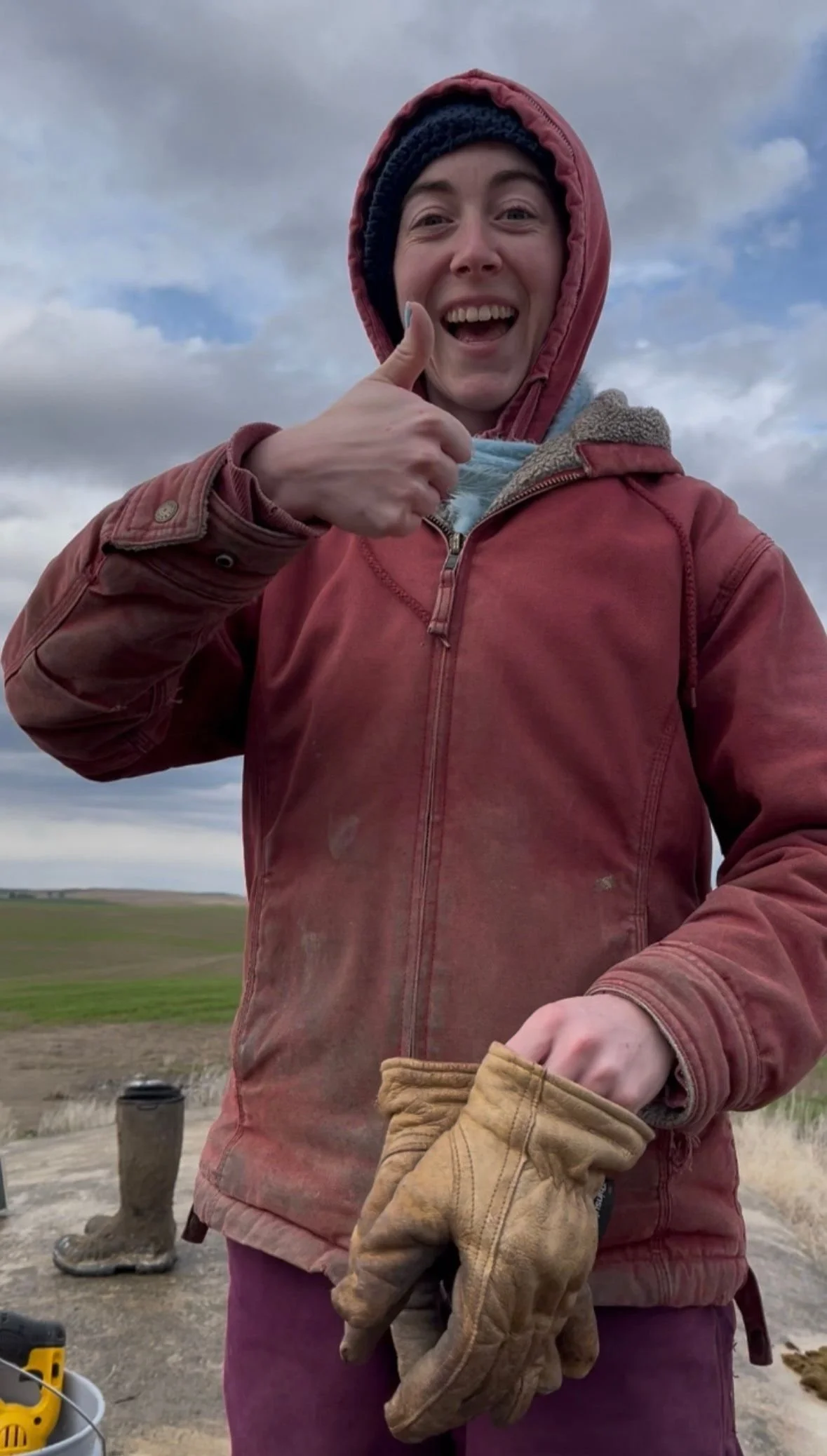When It Rains It Pours, But in This Case It Was Bone Dry
It is a continued joke here on the ranch that every time Dad leaves and I am home alone taking care of the land and the herd, something big goes wrong. Whether that be 50 yards of fence torn out and 80 head of cattle running through a neighbor's wheat field that I had to get creative to get back in, or pulling calves out of young heifers solo while juggling other ranch chores.
A couple of weeks ago was no different—Dad left, I was taking care of the place, and the day started off with finding out that our 1892 ranch house had no running water. Fantastic. Before I discovered this, the day had started with my normal routine when I’m taking care of the place. I got to the ranch earlier than usual, took the dogs out, grabbed some breakfast, and (attempted) to get a glass of water. But one thing was different… there was hardly any water coming out of the faucet. My heart dropped. I knew exactly what had happened: the liner in the cistern had caved in.
A bit of backstory: our house’s drinking water supply is from a well about a quarter mile from our house at the top of a large farmer’s hill, where there is a huge 18,000-gallon concrete cistern for water to accumulate, then flow down a long pipe to the house. This concrete cistern has a large rubber liner in it that was most likely installed in the mid-1900s. The whole setup is ancient but works like a top (knock on wood). When we moved in back in 2012, one half of the liner was caved in. We had to drain the whole cistern, climb down 12 feet underground into this concrete tomb, and prop the liner back up. However, we found out the other week that we had only fixed the half of the liner that had fallen in and left the other half—standing on its own with the original wood planks propping it up—untouched.
After discovering this hiccup, I went on with my day feeding the cows, making up boxes of beef orders to ship out, as well as doing the normal “needs to get done first” jobs, since fixing the cistern was not something I was going to do solo. This is a job for the whole crew when they get back home. Of course, I mean the whole crew as in both my siblings and Dad. Not only are we two guys running a ranch and a beef business, a med student, and the WSU Vet School animal care manager, but we are also the Palouse River Premium Water and Utilities Department—because we are down to fix our own stuff, and out in the country you have to be self-sufficient.
So, while I was waiting for the crew, I called all around the Palouse to find 2x2-inch aluminum angle so that we could prop the liner back up, got small pumps set up to pump out of water troughs to make sure all the cows had water, and went to the neighbors to fill milk jugs with drinking water for me and the dogs.
Once Dad got back from his work trip and supplies were gathered, Pearl and my brother Richard came to help get water back to the house. After a quick safety briefing about how many people we have heard of dying down in wells, and a harness around Dad, he went down to start pumping the little water that was left out and to clean the cistern best he could. He also explained that he was the test guy to make sure it was safe before Richard and I joined him. It was also made clear that if he passed out, we were not to come get him.
As expected, he didn’t pass out. Once the water was pumped out, Richard and I joined him, with Pearl staying out of the cistern in case anything went wrong. After a couple of mistakes and getting creative in the moment to fix them, the liner was up and we were able to turn the pump back on for the long four days it takes for the cistern to fill up. That was a long day—we got finished with the waterworks around 8 p.m. and just made it to the last restaurant open in town for some pork tacos and good conversation with the siblings. (Dad decided to stay at home so he could go to bed sooner.)
Since the water has such a long distance to travel, and only about three gallons a minute flow from the well (hence the need for the big cistern), and because there’s no breather on the inlet of the pipe, it takes about two days for the water to reach the house. So we were out of water, I believe, for four days—maybe five. In the end, though, everything got fixed, no one got hurt, and I had a really good time while home alone solving the puzzle of how I was going to get water to all the cows while waiting for everyone to get back. Just another fantastic day at the ranch.
-Ryley



